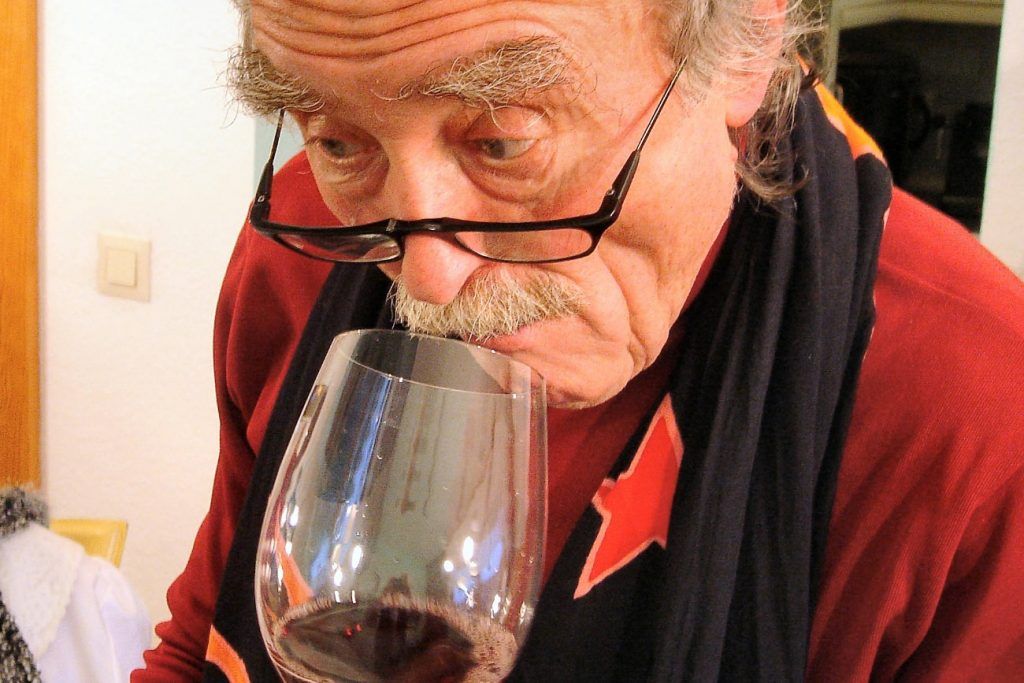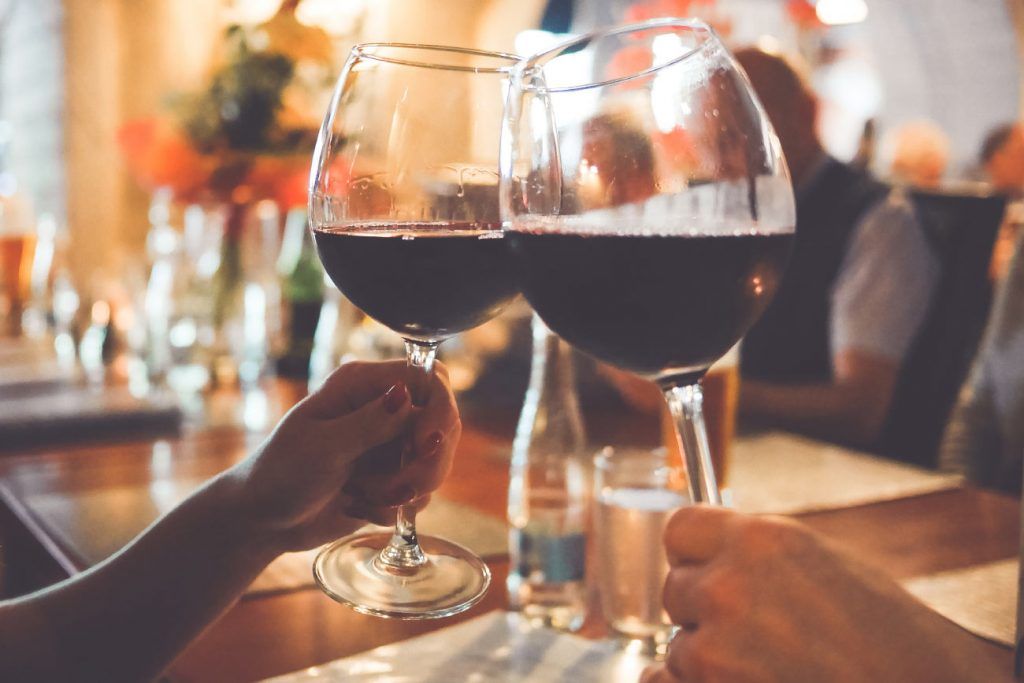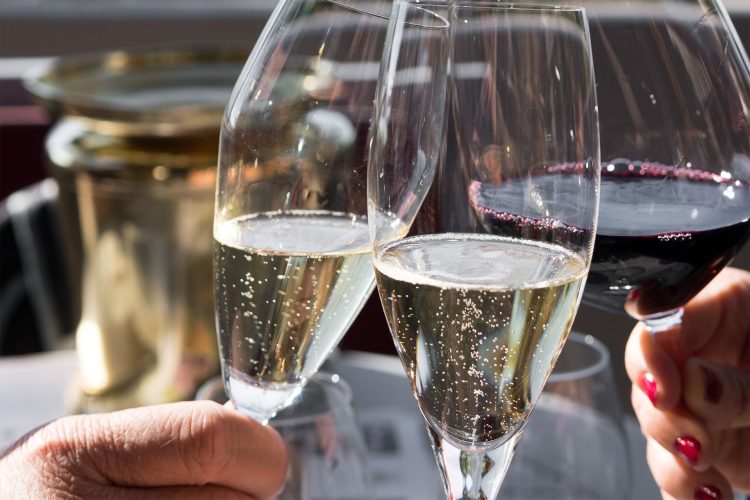Who thought tasting wine could be so complicated? Don’t you just take a big gulp, suck in some air, and taste away. Well yes, absolutely! Enjoying wine should not be something too hard. But if you are looking to learn a little bit more about how wine is evaluated, let’s follow the stages of tasting.
SIGHT
We start by looking for clarity in the wine. Holding the glass up to the light we firstly look to see that the wine is clear and without any cloudiness or left over bits from the wine making process.
We also look at the wine to determine how it has aged. Even if the wine is young it may have aged prematurely which will change how it tastes. The most evidence of ageing occurs around the rim of the wine. Red wines lose their vibrance and get paler with age, the rim goes purple, ruby, brick or brown. In white wine a green tinge will often indicate youth while a deep yellow-gold colour may indicate age or the use of oak barrel in the maturation process (see our page explaining the wine making process). White wine will develop a broad watery edge as they age.
Looking at white wine we may also see the presence of tartrates in the wine. We have all experienced those crystal type left overs some times in wine. These are called tartrates and are caused by tartaric acids solidifying during the wine maturation process either because of cold weather or due to the wine maker purposefully using a cold stabilisation process. The important thing is that tartrates have no negative effect on wine or the taste of wine. We might also see very small bubbles (CO2) in white wine. This can indicate two things: a youthful freshness in the wine; or an unwanted second fermentation which will have the smell of apples and yeast.

SMELL
Wine professionals very rarely use the word smell to describe wine – instead talking about the aromas.The best way to get the aromas from the wine glass is to swirl the wine around in the glass. This is done to release the smells. We will describe a wine as closed if it is difficult to immediately detect the aromas and then as opening up as it reacts to the oxygen in the air. Older wines are usually more “open”.
There is nothing too special about identifying aromas in wine. This is very personal. Some of the aromas often associated with wine are honey, leather, smoke, farmyards, black currant, raspberry, flowers, violets, apples, peaches, apricots, nuts, petrol, oak, vanilla, spice, bread, yeast, and butter. Be as inventive as you want in describing wine. New Zealand’s most well known wine the white Sauvignon Blanc has been famously described as smelling of cats pee on a gooseberry bush.
The aromas of wines can often grouped together as being fruity (like the black currant aromas evident in Cabernet Sauvignon or the tropical fruits of a late harvest sweet wine), floral, vegetal (like the grass in Sauvignon Blanc), or spicy (like black pepper in Pinot Noir or vanilla in an oaked Chardonnay).
Here is a little bit of useless information you can use with your friends when showing off your wine knowledge. Did you know you can not smell sweetness? You can smell honey, apricots, molasses and other sweet style aromas, but sweetness itself is not as an aroma.
We will also smell wine looking for any potential flaws in the wine. This is one of the wonders of wine, that the wine making process is not perfect, that every bottle has its own characteristics and occasionally some flaws. Some of the problems that you might experience in wines are corkiness (or TCA taint) which is recognisable by a musty type smell (very rare in New Zealand wines because of the use of screw caps instead of cork to close bottles), in white wines you may smell sulphur dioxide which gives a smell of burnt matches caused from the fining process (see our guide to the wine-making process), in wines that have aged badly you might smell acetic or vinegar or oxidation which is has a burnt smell and is often also identified by a brown colour in the wine.
TASTE
Finally the bit we have been waiting for – drinking the wine! That should be easy right?
Actually it is! The parts of the mouth help identify the characteristics of the wine. For example, the front of the tongue is where we taste sweetness, the sides of the tongue is for acidity (strong acidity makes your mouth water, even a tingling of the tongue), a warming sensation at the back of your mouth suggests that the wine might have a higher alcohol content, and a drying of the gums, tongue and teeth is indicative of a wine that is strong in tannins.
You will hear people describe the weight of wine, which is how the wine feels in their mouth. A wine is often described as full bodied because it feels like it fills your entire mouth. We also talk about the length of the wine, which is how long the tastes and aromas last in your mouth after you have swallowed (or spat it out).
What is this sucking in air or pushing the wine through our teeth business you see people doing when they taste wine? Well it is the same concept as swirling the wine around in the glass, it is designed to increase the oxygen in the wine and release the flavours and aromas all around your whole mouth.

SOUND
What about sounds? We talked about sight, taste, and smell but can wine have a sound. Well, how about the chinking of glasses? Some will say that the chinking of glasses is designed to engage the sense of sound to complete the sensory experience of tasting wine. So chink-chink, drink up and enjoy your wines with Altitude Tours.


